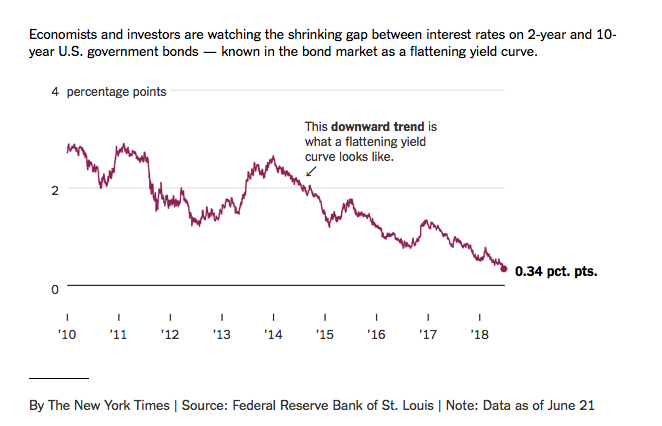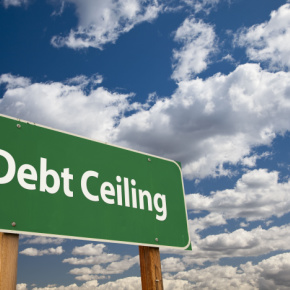The US economy is robust and corporate earnings are strong. Yet storm clouds may be gathering on the horizon.
That’s the consensus among technical analysts who keep an eye on the yield curve, a plot line of short- and long-term interest rates.
That’s everything from three-month, two-year, five-year Treasury debt to the longer-term, 10-year bond.

Crystal Ball
What has everyone’s attention is that the yield curve is flattening. That is, the spread between short-term rates and long-term rates is narrowing.

A flat yield curve often expresses investor pessimism about the future.
An inverted yield curve, in which long-term rates dip lower than short-term rates, has been deadly accurate in predicting economic downturns.

As the New York Times recently reported:
Every recession of the past 60 years has been preceded by an inverted yield curve, according to research from the San Francisco Fed. Curve inversions have “correctly signaled all nine recessions since 1955 and had only one false positive, in the mid-1960s, when an inversion was followed by an economic slowdown but not an official recession,” the bank’s researchers wrote in March.
Takeaway
It has been 9 years since the end of the Great Recession.
And the current bull market in stocks, which started in March of 2009, is one of the longest in history.
At some point, the current business cycle will end. It’s just a matter of when. And, in my opinion, the flattening of the yield curve is a red flag worth watching.
Photo Credit: crsteen1980 via Flickr Creative Commons



